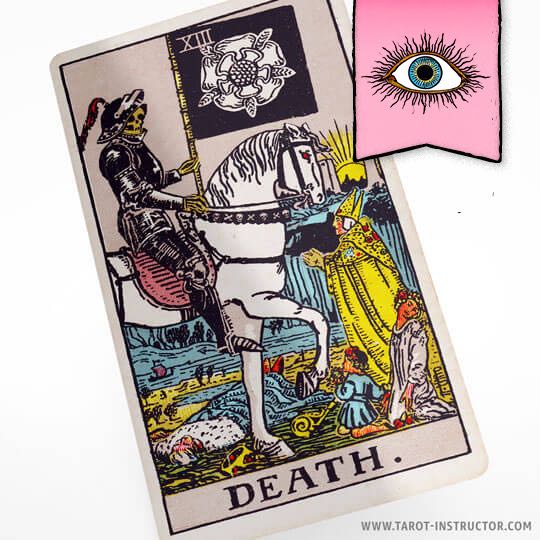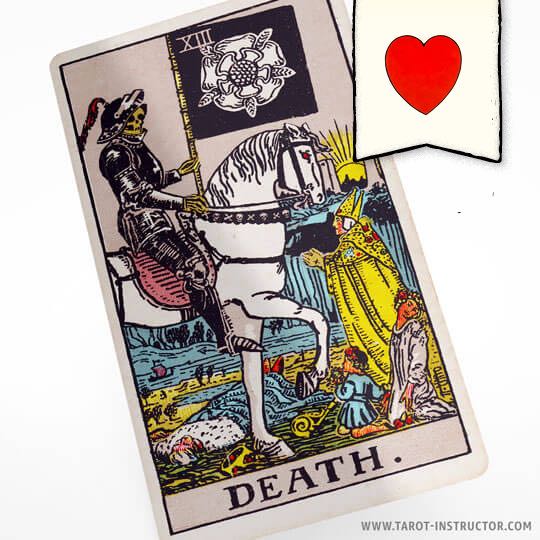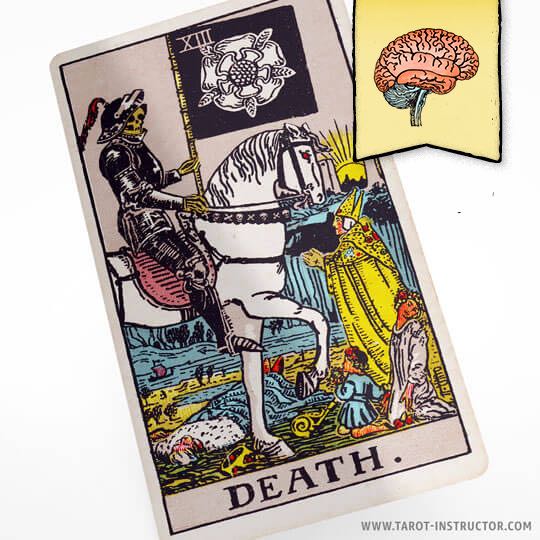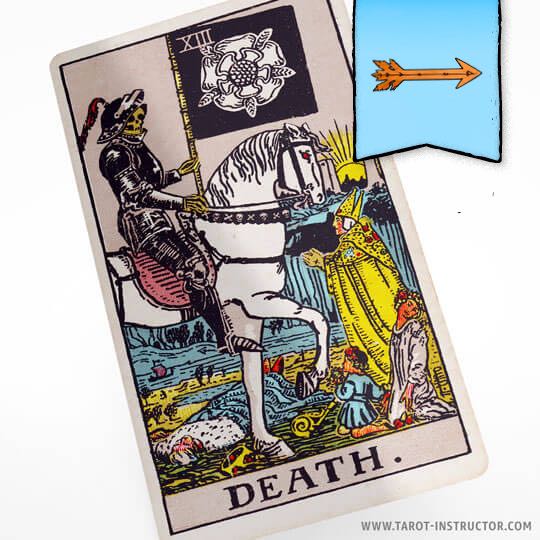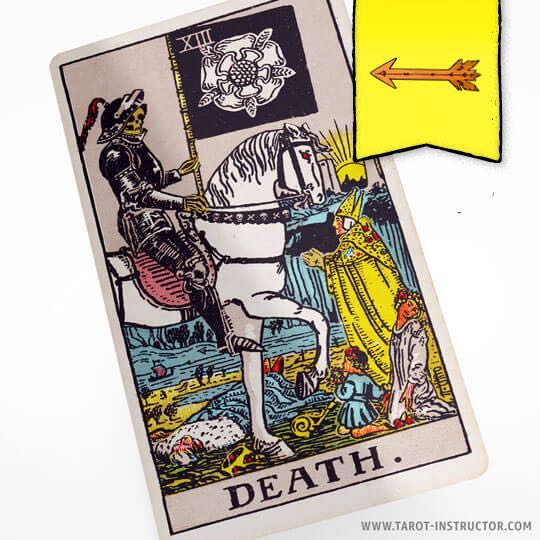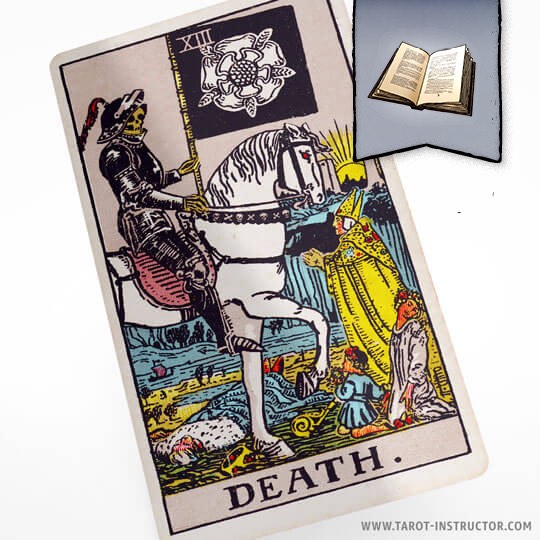Death tarot card features following symbolic elements
Death tarot card features following symbolic elements
Death as advice
„Release what no longer serves you to welcome new beginnings.“
Death keywords upright
Transformation, Endings, Change, Release, Major Changes.
Death keywords reversed
Fear, Stagnation, Delay, Resistance, Avoidance.
Death card element
Water
Death zodiac sign
Scorpio
Understanding the Death Card as How Someone Sees You Upright and Reversed
The Death card, often misunderstood, is one of the most profound tarot cards within the Major Arcana. It symbolizes transformation, endings, and new beginnings rather than a literal end. Representing the cycle of life, Death embodies themes of change, renewal, and the inevitability of transition. This article explores the significance of the Death card as how someone sees you, examining both its upright and reversed meanings. We will delve into its implications for potential relationships, new connections, existing partnerships, and ex-relationships.
The Death Card Element and Zodiac Sign
The Death card is associated with the element of Water, symbolizing emotions, intuition, and the deep currents of transformation. This elemental association brings forth qualities such as adaptability, fluidity, and an understanding of the deeper aspects of life. The Death card is also linked to the zodiac sign of Scorpio, known for its intensity, passion, and transformative nature. This combination of elemental and astrological influences creates a powerful archetype that represents the potential for profound change and rebirth.
General Meaning of the Death Card in How Someone Sees You
When interpreting the Death card as how someone sees you, it’s essential to consider its primary themes of transformation and renewal. In its upright position, the Death card suggests that you are perceived as someone who embodies the ability to let go and embrace change. People may view you as a catalyst for transformation, someone who encourages others to release the old and welcome the new. Your capacity for reinvention may inspire those around you, instilling a sense of courage to face their own transitions.
Conversely, when the Death card as how someone sees you appears reversed, it may indicate a contrasting perception. This could suggest that someone sees you as resistant to change or clinging to the past. The reversed Death card may imply that your reluctance to let go is viewed as a hindrance to personal growth, making it difficult for others to connect with you. This duality emphasizes the importance of embracing change and recognizing when it’s time to move forward.
Death Card as How Someone Sees You in Potential Relationships
Upright: In the context of potential relationships, the Death card as how someone sees you signifies that they perceive you as someone who is capable of profound change and growth. They may admire your ability to navigate life’s transitions with grace and authenticity. This perception can foster a strong attraction as they recognize that you are not afraid to confront the challenges of life and emerge stronger. Your willingness to embrace transformation encourages potential partners to feel safe in exploring their own vulnerabilities, creating a dynamic where both individuals can evolve together.
Reversed: When the Death card as how someone sees you appears reversed in the context of potential relationships, it may suggest that someone views you as someone who struggles to adapt or let go. They might feel that your reluctance to embrace change creates an atmosphere of stagnation, hindering the potential for growth in the relationship. This perception could lead to feelings of frustration or hesitation in pursuing a romantic bond. The reversed Death card serves as a gentle reminder to reflect on how your attachment to the past may be impacting your ability to form new connections. Embracing change can open the door to fresh possibilities.
Death Card as How Someone Sees You in New Relationships
Upright: In new relationships, the Death card as how someone sees you suggests that they perceive you as a transformative force in their life. They may view you as someone who inspires them to shed old habits and embrace new perspectives. Your ability to navigate change encourages them to explore their own potential for growth and transformation. This card indicates that the foundation of your new relationship is built on mutual respect and a shared desire to evolve together. Your presence may feel invigorating, making the connection feel exciting and full of potential.
Reversed: When reversed in the context of new relationships, the Death card may suggest that someone sees you as fearful of change or overly attached to previous experiences. They might interpret your approach as one that resists the natural flow of growth, leading to feelings of pressure or uncertainty. This card serves as a reminder to practice openness and embrace new experiences without the weight of past associations. Engaging in honest conversations about your fears and aspirations can help cultivate a more balanced connection, fostering an environment where both partners feel empowered to grow.
Death Card as How Someone Sees You in Existing Relationships
Upright: Within existing relationships, the Death card as how someone sees you reflects a perception of you as a source of renewal and transformation. Others view you as someone who encourages growth and evolution within the partnership. This card suggests that your ability to confront difficult changes and guide your partner through transitions fosters a sense of trust and security. Your transformative nature can inspire both partners to explore new aspects of themselves, leading to a deeper and more meaningful connection. Your presence encourages a dynamic where both individuals feel valued and understood.
Reversed: When the Death card as how someone sees you appears reversed in the context of existing relationships, it may indicate that someone sees you as resistant to necessary changes or as someone who struggles to let go of past grievances. They may feel that your reluctance to embrace transformation stifles the emotional connection between you. This perception can lead to frustration or feelings of stagnation if not addressed. The reversed Death card serves as a reminder to engage in open dialogue about your relationship dynamics. It’s essential to assess how your fears regarding change impact the partnership and work towards fostering a space that encourages growth and healing.
Death Card as How Someone Sees You in Ex-Relationships
Upright: In the context of ex-relationships, the Death card as how someone sees you suggests that they look back on your time together with a sense of appreciation for the growth and transformation you each experienced. They may see you as a person who inspired significant change in their life, recognizing the lessons learned during your time together. This card encourages you to acknowledge the positive aspects of the relationship, empowering you to embrace new opportunities ahead. Their perception of you may reflect gratitude for the insights gained, even if the relationship ultimately did not endure.
Reversed: When considering ex-relationships, the reversed Death card as how someone sees you may indicate that someone still harbors feelings of disappointment or resentment regarding your time together. They might view you as resistant to change or as someone who was unable to move on from past issues. This perception can linger, causing unresolved feelings that hinder both parties from fully letting go. The reversed Death card serves as a reminder to evaluate past dynamics and recognize any lingering negativity. It may be time to find closure and acknowledge the lessons learned, allowing both individuals to move forward with empowerment.
Conclusion
The Death card is a significant symbol that carries profound meaning regarding how someone perceives you, offering insights into transformation, renewal, and relationship dynamics. Whether in its upright or reversed position, this card provides valuable guidance for navigating potential, new, existing, and ex-relationships. In its upright state, the Death card symbolizes a nurturing and transformative figure, someone who encourages others to embrace change with courage. Conversely, in its reversed position, it prompts reflection on the challenges that may arise from being resistant to change or clinging to the past.
Ultimately, the Death card as how someone sees you invites you to embrace your inner transformative energy, recognize your potential for growth, and cultivate meaningful connections with others. By understanding the implications of this card across various relationship contexts, you can approach your interactions with clarity and purpose. The insights gleaned from the Tarot are not definitive; instead, they offer a lens through which to view your relationships and personal growth. This perspective empowers you to make informed decisions and enhance your connections with others, leading to a more fulfilling and enriched life.
Source: Wikipedia Death tarot card
Reddit The Death Card
Quora What is the meaning of the Death card?
Unlock the mysteries of tarot cards.
